 I talk with my dog every day.
I talk with my dog every day.
I communicate with her just like I communicate with people: By using a combination of words and body language.
And she “talks” back! Learning to read my dog’s body language has had a wonderful impact on our relationship.
Think about it: all good relationships are built on shared communication. This counts for our dogs too.
Understanding canine body language is like unlocking a secret code, allowing pet parents to connect more deeply with their dogs.
In this guide, we’ll explore the world of dog communication. Let’s shed some light on what our dogs are trying to tell us!
Each Dog is Unique
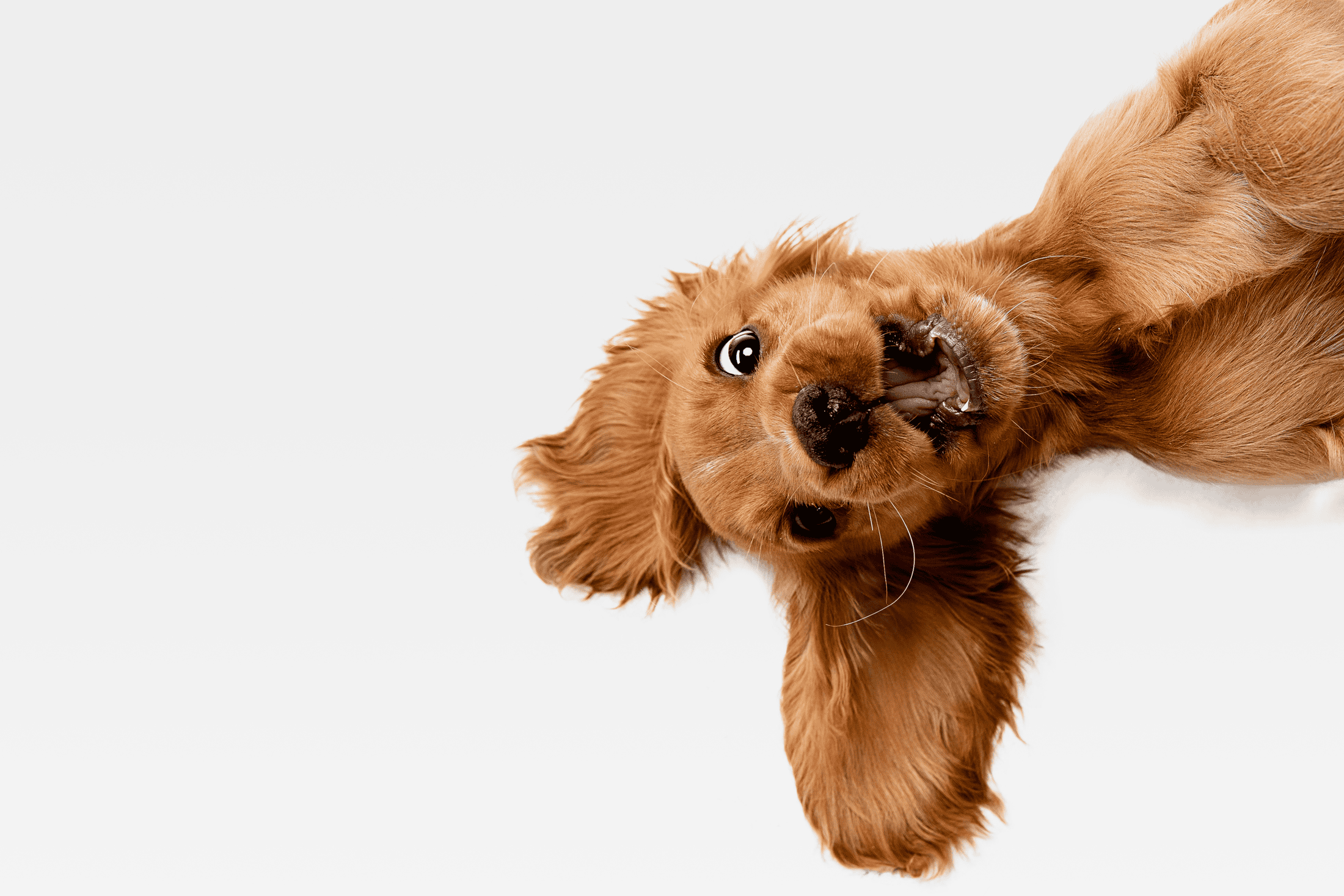
Before we jump in to the specific body language of dogs, I want to tell you about something I’ve observed over the years as a dog trainer.
I have worked with countless dogs in the past three decades. And I can say with certainty that no two dogs are the same.
Your dog’s breed, size, and unique mannerisms will all influence body language. I’ve met dogs of all types. Understanding dog body language is a skill that will grow stronger as you learn more about your own dog.
Relaxed Dog Body Language
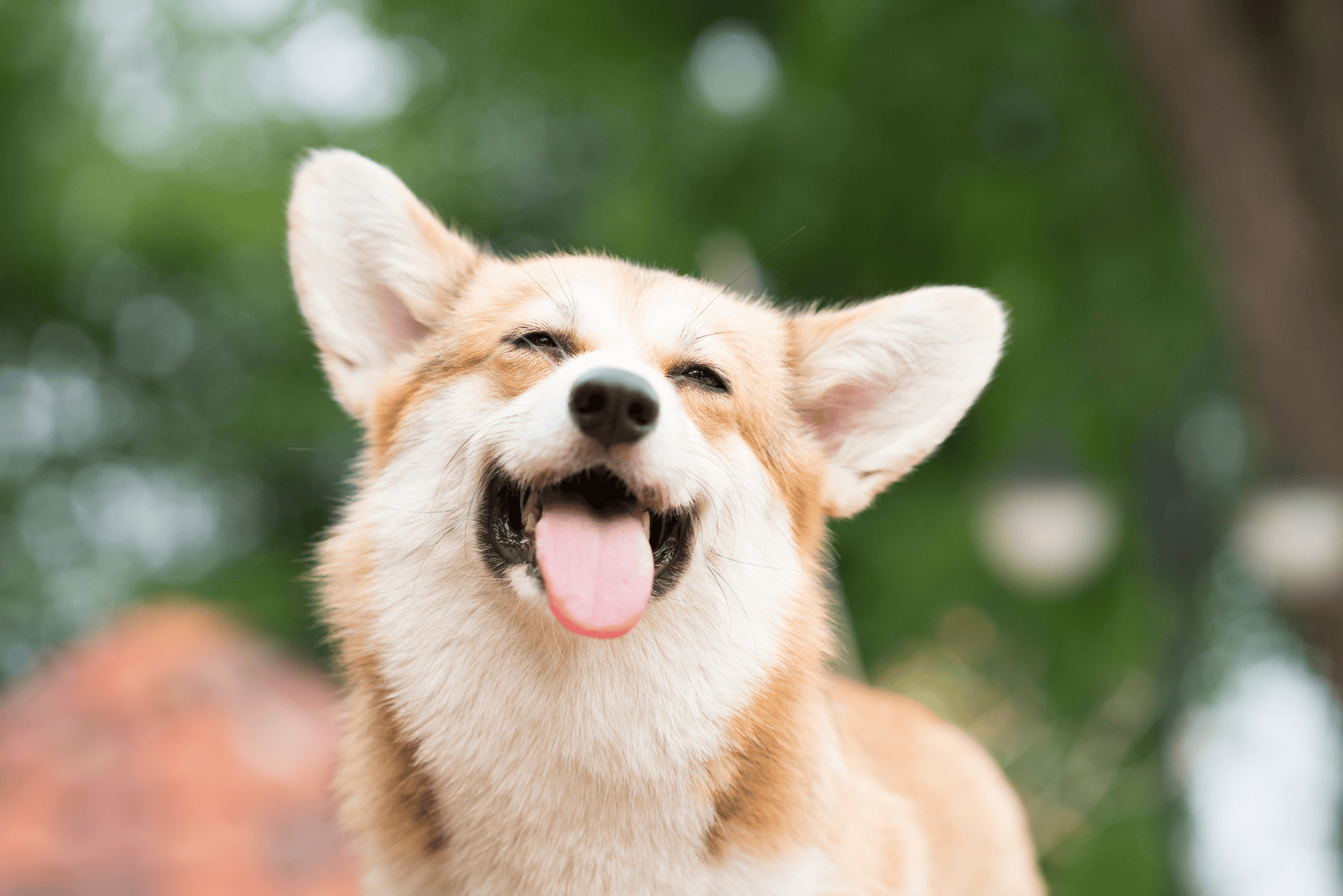
When your puppy is relaxed, he will appear very soft. Your dog’s eyes and ears will be in a neutral position. This may look different depending on whether your dog has floppy ears or pointed ears.
Your happy dog likely won’t have a wrinkled forehead and might even have a slight smile. However, this depends on your dog’s breed.
His tail will also likely be level with his spine, although this positioning varies from breed to breed. His body will be wiggly and loose.
If he rolls on his back and offers you his belly, he might be looking for love!
In some cases, a fearful dog may show you his belly as a sign of submission. If your puppy is showing the previously mentioned behaviors, he probably just wants a belly rub.
Refer to the image below. This dog’s body language cues are showing that she is fearful. She appears very stiff and her tail is tucked. This is not an invitation for a belly rub. This dog is trying to say, “I’m not a threat!”
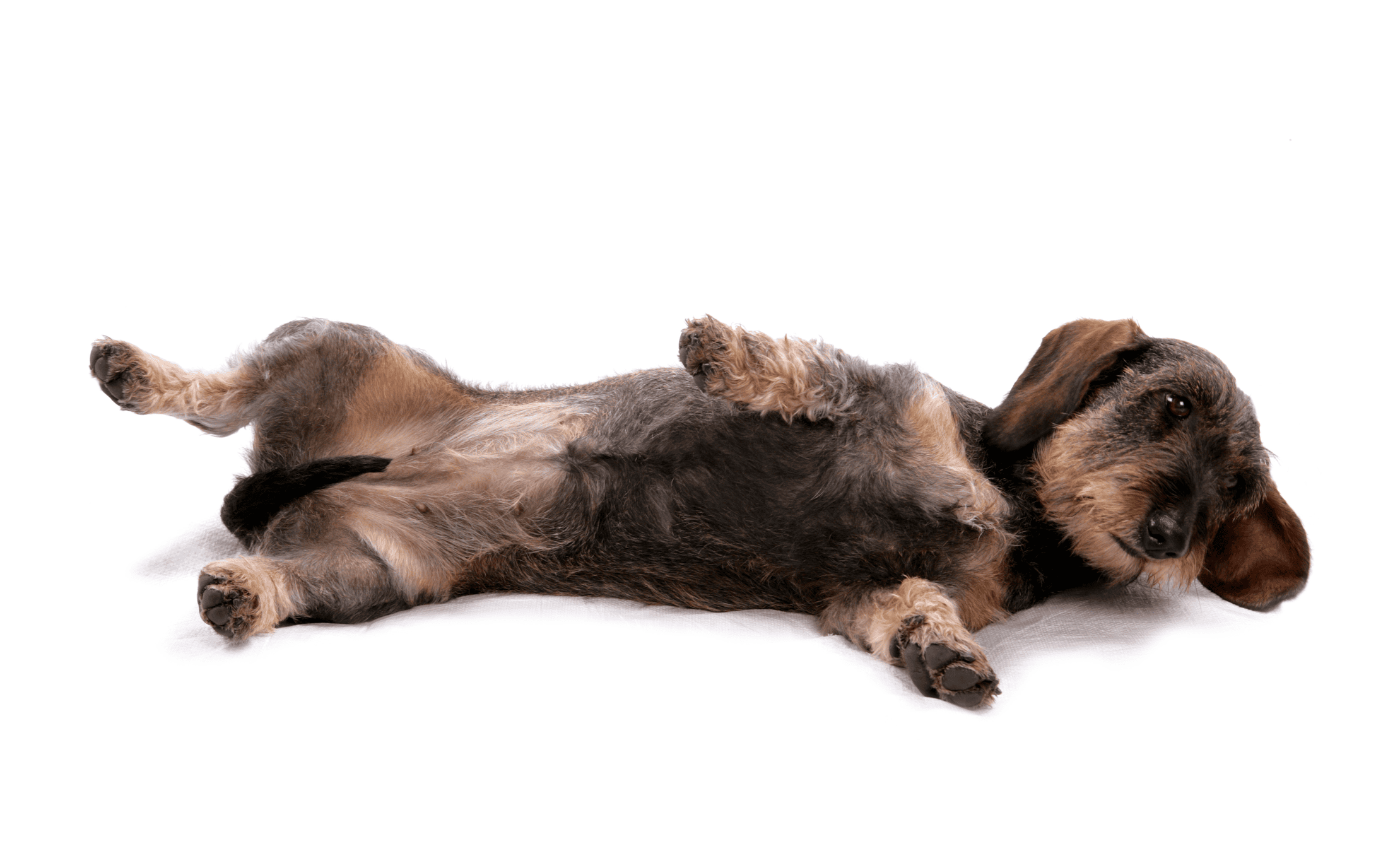
This is what we call an appeasement behavior. Dogs tend to show submission when there is a perceived threat. If this doesn’t work, they may become aggressive.
Scared Dog Body Language
A fearful puppy will typically cower away with her tail tucked between her legs. Her ears might be pinned back, and she may even be trembling.
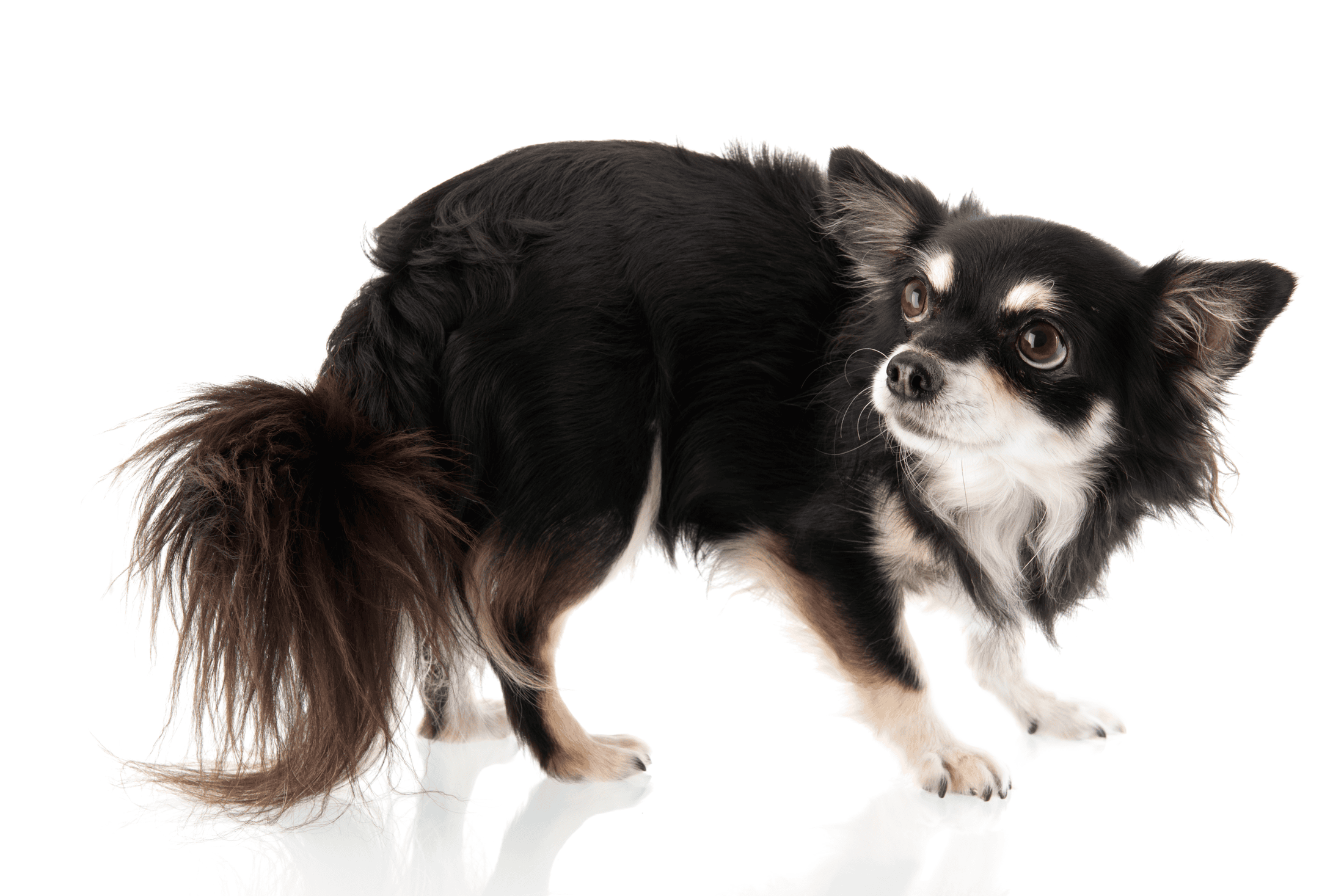
Other signs of anxiety in dogs can be more subtle. Some of these signals are excessive yawning, lip licking (when there is no food nearby), or the “whale eye” (when you can see the whites of your puppy’s eye).
Sometimes, dogs lick their lips and shake their heads to self-soothe. Look for these calming signals when reading dog body language.
These indicators can be harder to spot because they seem like normal behaviors. Still, it’s best to use soothing techniques just to be sure. The Ear TTouch is a great way to calm a scared puppy.
Playful Dog Body Language
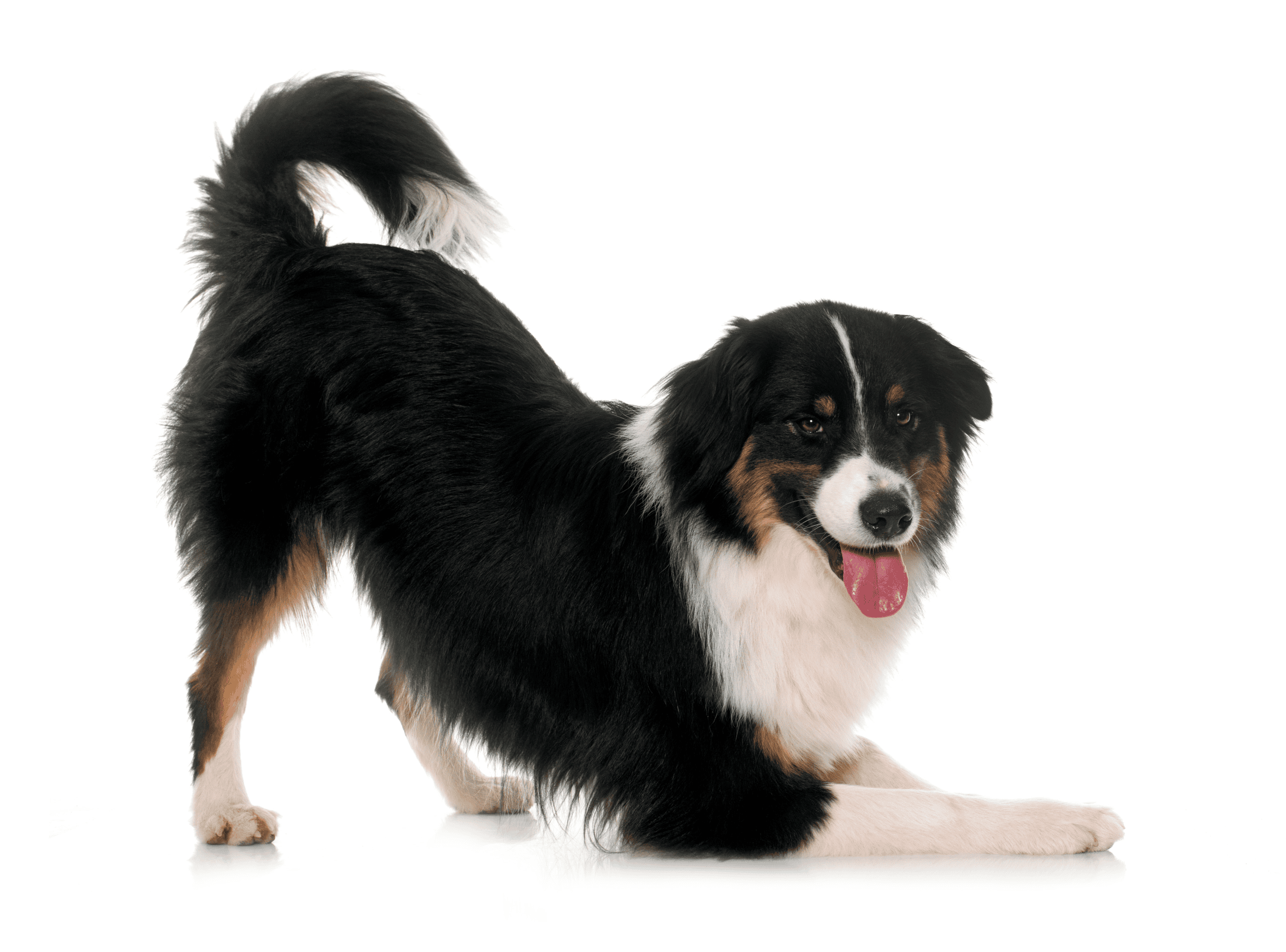
The adorable “play bow” is an unmistakable sign of a happy puppy. Your puppy’s tail will be wagging either level with the spine or higher if she is extra giddy. Her movements might be extra bouncy too.
Note: dogs often snarl or growl while they are playing. This is a situation where you need to be mindful.
It might be completely harmless behavior and does not mean your dog is being aggressive. However, there is a difference between playful growling and actual aggressive behavior.
If your puppy is simultaneously growling and displaying playful behaviors, you need to decide whether or not this is actual aggression. If you are uncertain, please consult with your vet or a dog training professional.
Defensive Dog Body Language
It can be difficult to distinguish between an alert dog and an aggressive one. In either case, your dog’s hackles (the hair along his back) will likely be raised.
Raised hackles make a dog appear bigger. This is a method of defense. Your puppy’s fight or flight response may be kicking in here.
Your puppy will also appear stiff and might be staring intensely into your eyes. His tail might be sticking straight up and even wagging slightly.
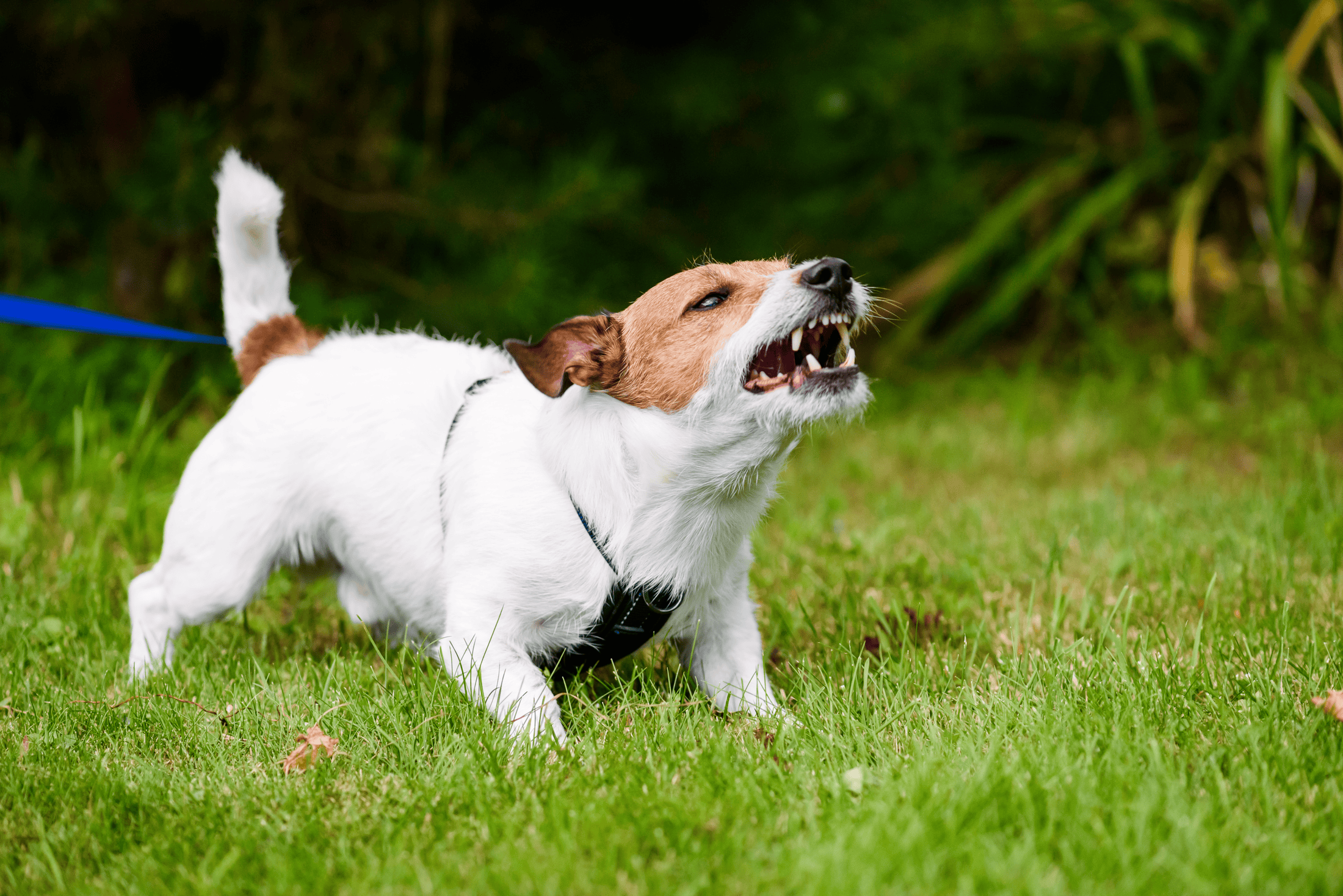
You can sometimes tell if a dog is threatening before he attacks. There are clear warning signs: curled lips, bared teeth, and a growl or snarl. If you experience this kind of behavior, here are a few tips:
Do not turn and run away, but slowly back off. Speak in a calm, gentle voice. Hold your hand up in a ‘stop’ position. Avoid making direct eye contact. Remain neutral.
Again, this is a case where you must be aware of your circumstances.
If you are uncertain whether or not your puppy is aggressive, please consult with your vet or a dog training professional.
The Tail Wag: More Than Just Joy
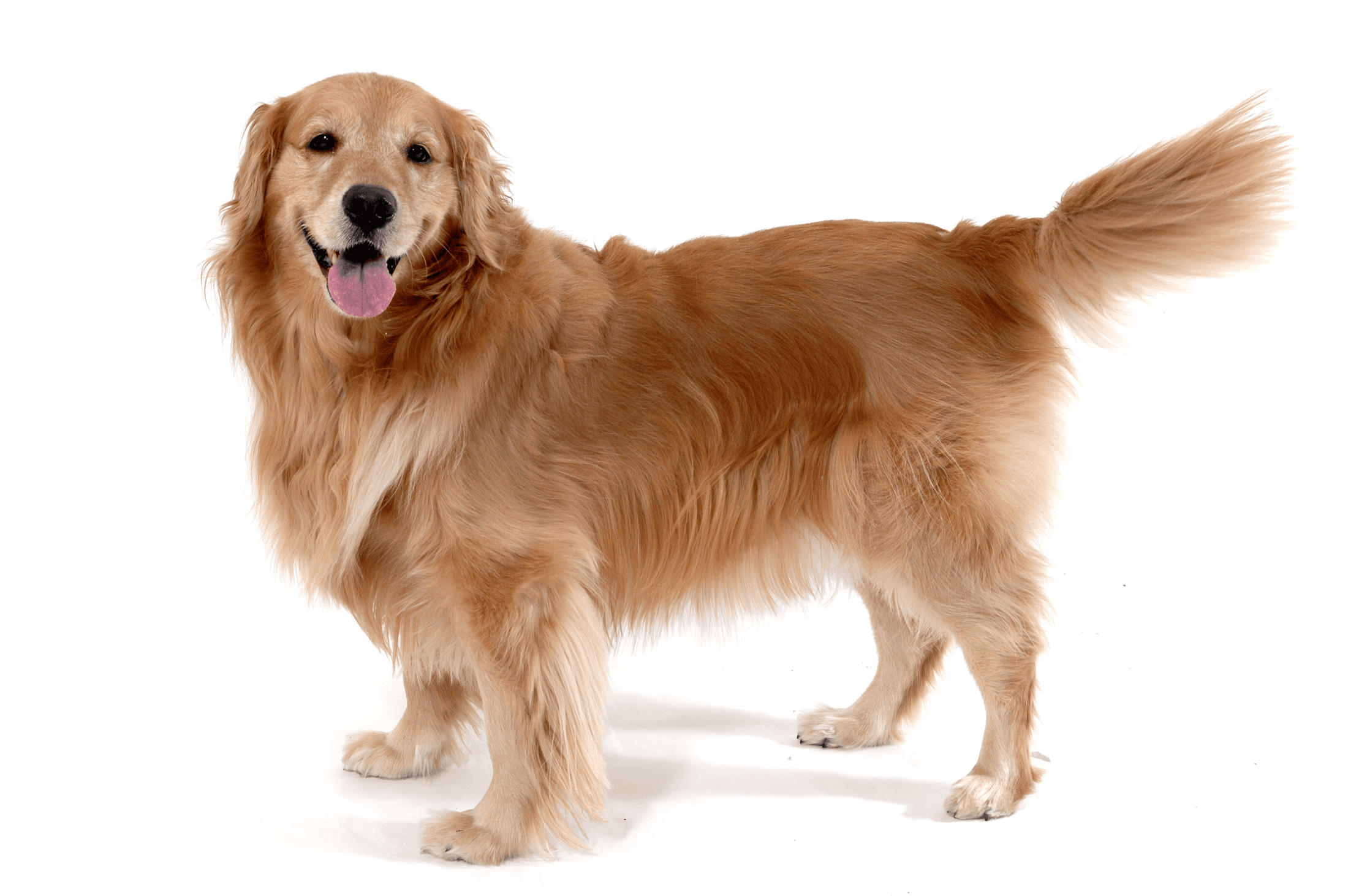
Most people assume that a wagging tail is the symbol of a happy dog. Well, that’s not always the case. Dogs wag their tails when they are happy, but a wagging tail can be paired with other emotions too.
Think of how your dog acts when you come home after a long day. If your dog is anything like mine, then her whole body is probably really wiggly and loose. It’s clear that your dog is happy in these moments.
Usually, a happy dog’s wagging tail will be mostly level with her spine. The tail position may depend on your dog’s breed though, so try to learn your dog’s body language cues.
Now, think of your dog’s body language when he is really alert. A high, fast wag can signify excitement, while a slow wag may convey uncertainty.
The tail’s position, speed, and other cues give you a glimpse into your dog’s emotional state.
Facial Expressions: The Art of Canine Communication
A dog’s face is a canvas of emotions, featuring a range of expressions. These expressions are a valuable form of body language. I look at a dog’s body posture and their facial expressions when I read dog body language.
From ear position to eye contact, each feature lends to this silent dialogue. Learning your dog’s facial cues is just one more way to strengthen your bond with your dog.
The Language of Dogs: Beyond Barks and Whimpers
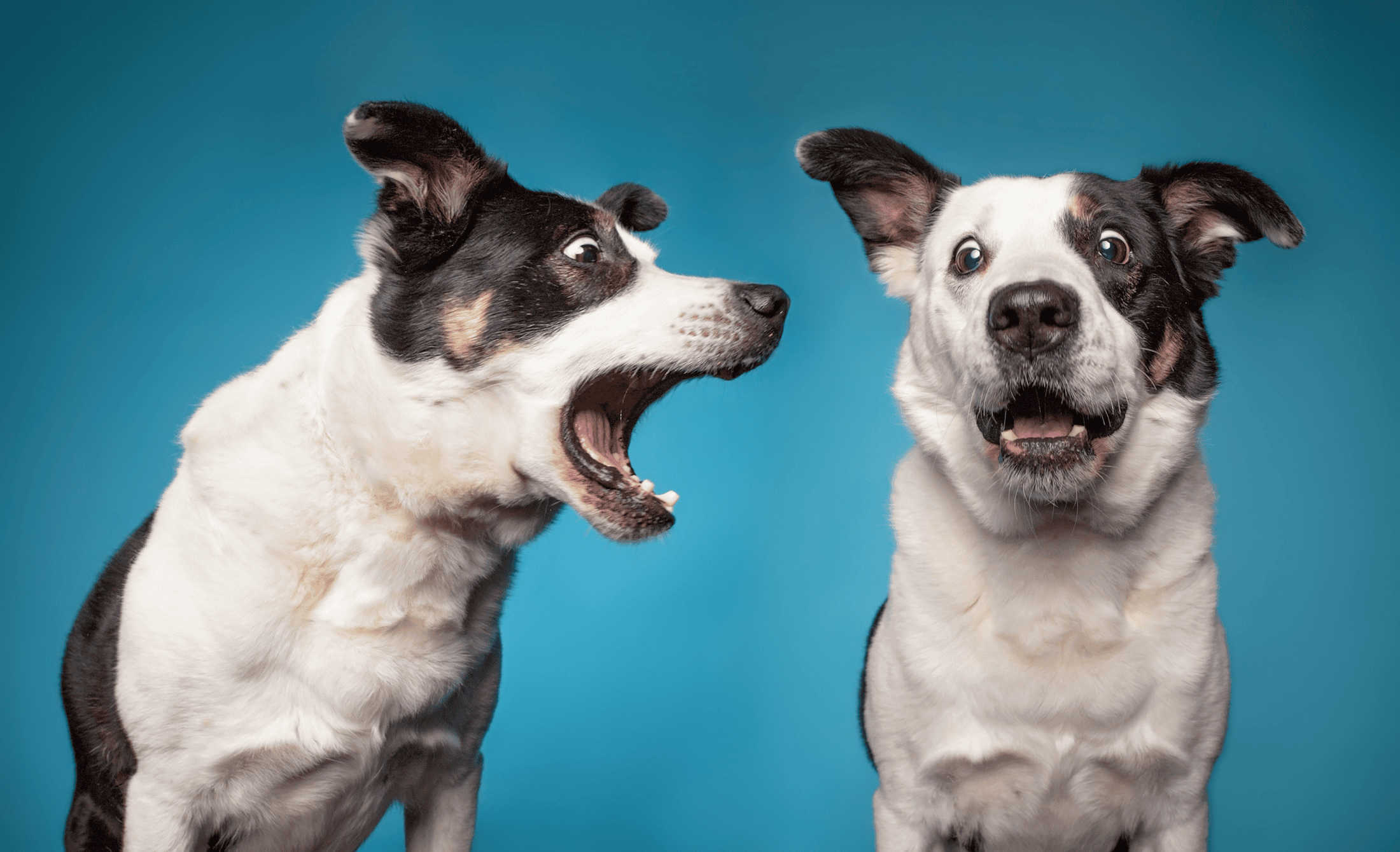
Dogs communicate with us on a daily basis. They also communicate with other dogs, utilizing a variety of signals. Play bows, gentle licking, and other behaviors contribute to this non-verbal dialogue.
I watch for these common signals when I supervise play between my dog and other dogs. If either of the dogs communicate that they are uncomfortable, I separate my dog and we move on.
Stress Signals: Recognizing Anxiety in Our Best Friends
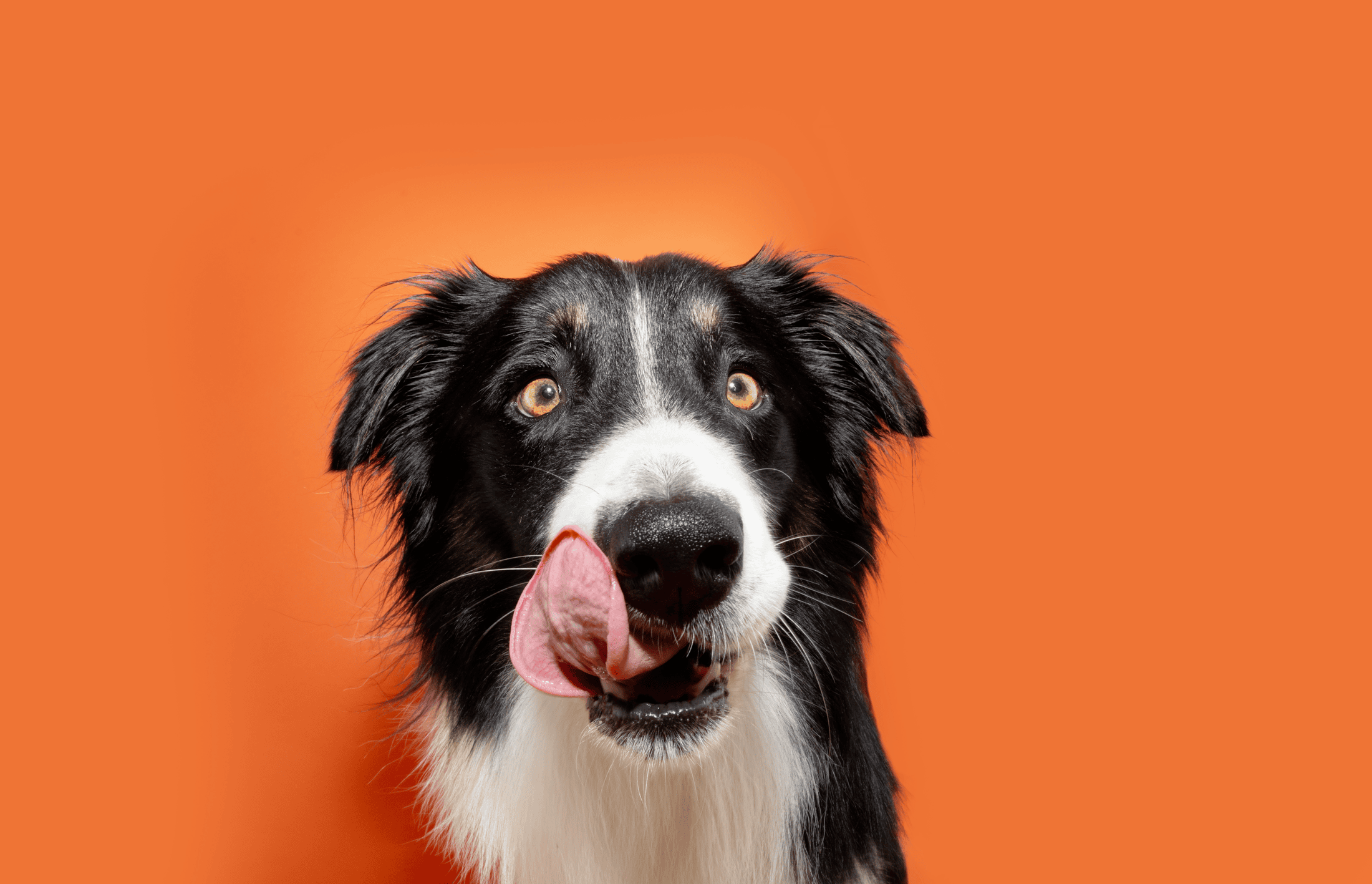
I want to repeat that stressed dogs are the most likely to bite.
Be mindful of signs of stress like lip licking, yawning, or the whale-eye (visible whites of the eyes). Your dog may also raise her front paw when stressed.
Look out for these moments. Your dog is trying to communicate emotions through body language. You just need to know how to listen!
Fluent in Dog Body Language
Striving to understand canine body language is one of the best ways to improve your relationship with your dog. Whether you’re reading your dog’s tail wagging, studying his body posture, or watching how he plays with other dogs, you are being a wondering dog guardian.
So, the next time your canine companion “speaks” to you, listen with your eyes, heart, and newfound understanding.
I also have a collection of free videos that you can refer to. In these videos, you can see me in action with some dogs I’ve worked with. Watch for body language cues and how I respond to them!
PS- Coming soon! New dog training book for kids will be released soon. If you are interested in joining our review team in exchange for a free copy of the book, please contact us at [email protected]






